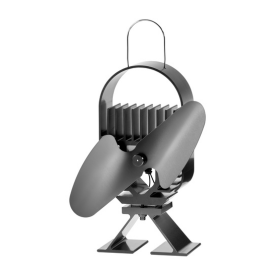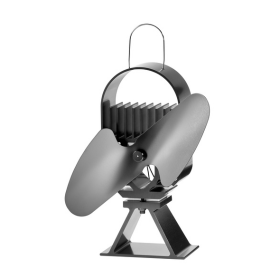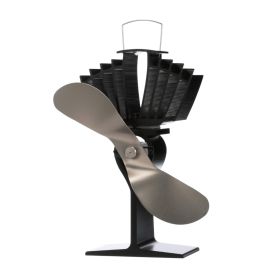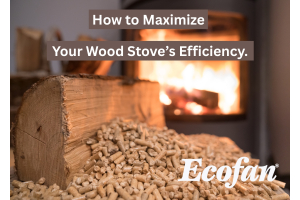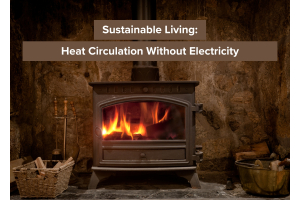Do Wood Stove Fans Work? And Answers to All Your Other Heat Powered Stove Fan Questions
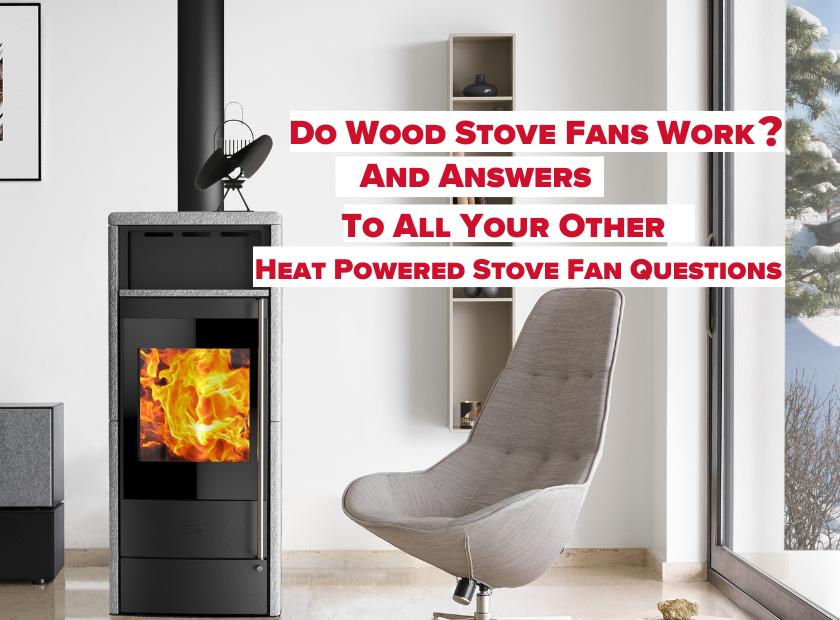
Answered: The top questions about wood stove fans, from the manufacturer of the original, first-ever wood stove fan.
You Have Questions All About Wood Stove Fans, We Have the Answers.
Ecofan has been a mainstay for wood stoves in homes around the world for decades, with the very first stove top fan invented by us: Caframo, in Ontario, Canada in 1994. The Bruce Peninsula, where Caframo has made its home, is not only known for its incredible beauty, but its harsh winters packed with cold, driving wind and lake effect snow storms. How do we cope with frigid cold temperatures and copious amounts of snow? We keep our homes toasty and warm! Many of us by heating with wood.
How Do Wood Stove Fans Work?
Wood stove fans generate their own electricity by creating an electrical current strong enough to power a small motor via the hot/cold differential known as the Seebeck effect. To generate its current, the base of the fan needs to sit on a stove with a surface temperature of at least 150°F (65°C), while the top fins draw in cooler air from behind. The greater the temperature difference, the more electricity is created and the faster the blade spins, spreading warmth throughout your home allowing you to feel warmer faster.

Are Some Wood Stove Fans Better than Others?
In short: Yes! Ecofan makes the best wood stove fans on the market. Period. But don’t just take our word for it. Ask anyone that has invested in an Ecofan after trying a cheaper version. Read all about our 25-year+ journey, of continuously improving the wood stove fan. Also read about our blade design, our less than 2% return rate, and our superior air movement. We don’t just make claims; we prove them.
Which Wood Stove Fan Is Best?
That’s a question we get a lot, and it depends on a couple of things. Namely: What kind of stove do you have? How large is the room your stove is in? While we continuously improve the original Ecofan, for some, the original is still the best. We make models for small stoves and rooms, and models that work at lower stove temperatures to move heat from gas, pellet, and soapstone burners. Of course, we also make the largest wood stove fan on the market.
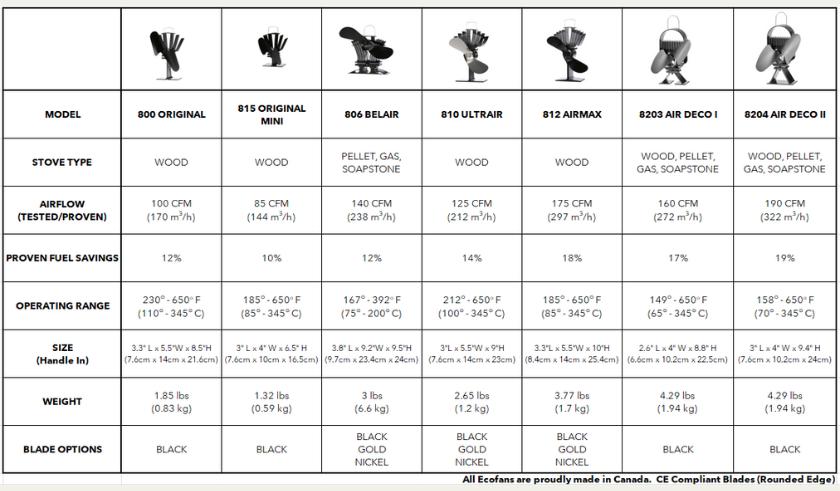
Are Wood Stove Fans Worth It?
Depends, do you have an Ecofan? Ecofan is designed to help circulate warm air from your stove so you feel warmer faster, instead of rising to the ceiling. Warm air rises and does little good when its hovering at ceiling height. Ecofan sits atop your stove and helps to circulate that warm air, in a far-reaching donut pattern throughout the room. Our premium aluminum is heavier and sturdier, our fan designs create a larger cold/hot differential to generate more energy, and our blades are pitched to move more air.
With improved circulation, less wood is also required. The University of Waterloo has completed studies on Ecofan, and concluded that you can save, up to 19% in fuel when you use an Ecofan on your stove top. Read the study here.
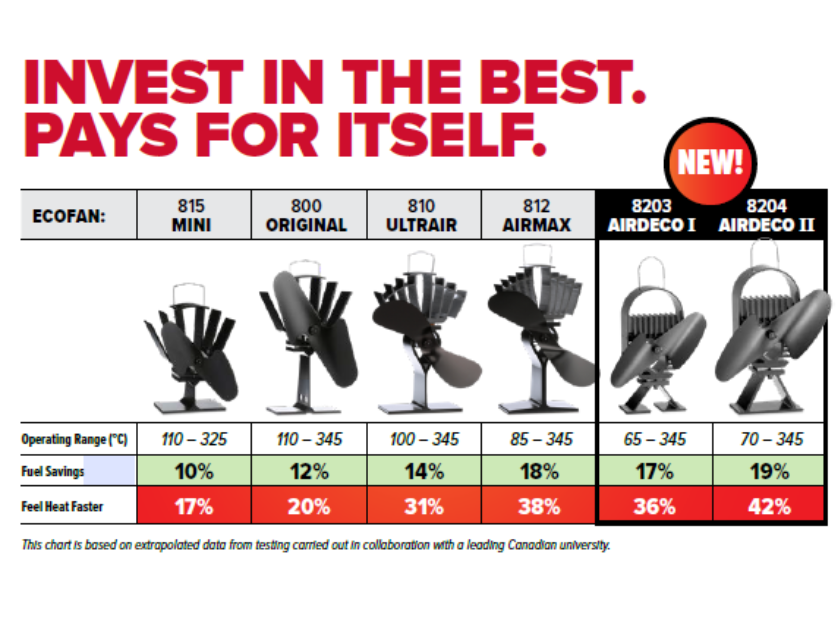
Where to Place a Wood Stove Fan?
Many wood stove fan manufacturers fail to mention it, but placement matters! It matters a great deal as it pertains to performance and lifespan. Be sure to position the Ecofan on a smooth flat surface on your stovetop near the side or back edge of the stove where cooler air can be drawn from behind and over the cooling fins. Do not place your Ecofan in the center of the stove, in front of the stovepipe or at the front of the stove as the top cooling fins will get too hot and your fan will not function as it should. This can also reduce a wood stove fan's lifespan.
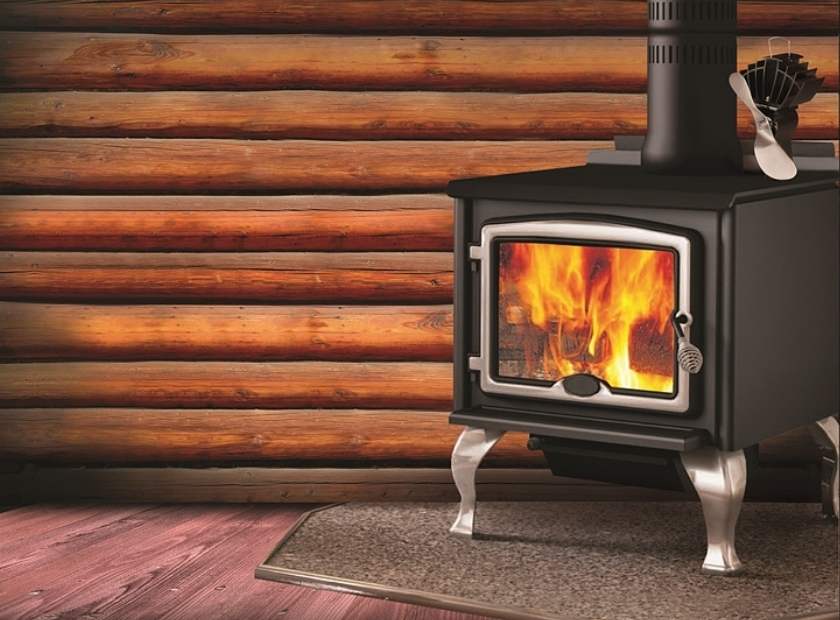
Which Wood Stove Fan Moves the Most Air?
Our measurement for airflow, CFM (cubic feet per minute) or m3/h (cubic meter per hour), are tested and proven metrics used to determine the efficacy of each Ecofan. We also test our competition to ensure we’re providing our customers with a superior product.
Air moves from the Ecofan in a donut pattern. The Ecofan is a warm air circulator, not a blower, so you will not feel air moving across your body when you get up close to an Ecofan. That would cool you down! Which is not the purpose of a stove fan. Instead, air moves outward in wide a pattern to effectively move warm air as far as possible.
How to Choose the Right Fan for My Stove?
There are three main things to consider when searching for the right Ecofan.
-
What is the size of the space you would like to heat?
Each Ecofan comes with a specific CFM rating, also known as cubic feet per minute of airflow. The larger the room, the higher the are required CFM. The number indicates the amount of air that can be circulated throughout the room in a 1-minute period. For example, the Ecofan AirMax pushes up to 175 CFM. This means the air will flow up to 175 cubic feet per minute. -
What is the surface temperature of your stove?
Ecofans require a specific operating temperature to create thermoelectric energy. To measure the surface temperature of your stove, simply take a stove top thermometer and place it on the stove’s surface where the Ecofan will be placed. This will allow you to determine if you require an Ecofan designed for wood-burning stoves or low-temperature stoves.
The type of material used for the surface of the stove will also affect which Ecofan you choose. If your stove is made from a material like soapstone which absorbs heat and releases it slowly, an Ecofan designed for low temperature stoves may be the better fit for you.
-
What is the size of the stovetop?
Ecofans require room-temperature air to flow through the cooling fins at the back of the fan. Not only does this allow for thermoelectric energy to be produced but it helps prevent overheating. The recommended placement for Ecofan is to the back of the stove and to the side of the stove pipe. If the surface of your stove is smaller, you may be able to place the Ecofan on an angle as long as the blades are clear from obstructions.
Will Ecofan Work On My Fireplace Insert?
If you own a fireplace or an insert, unfortunately, Ecofan may not be right for you. Ecofans must be placed on top of the stove’s surface in order to draw heat through the base. Fireplace mantles or insert ledges typically do not generate an appropriate level of heat. Ecofan also cannot be placed in front of the fireplace, as Ecofans are not designed to harness heat that may hit the back of the fan.
Are Wood Stove Fan Blades Safe?
Ecofans have rounded edges that are completely safe and CE-compliant. Other stove fans do not make this claim. Ecofan blades are also pitched to move as much air as possible while spinning at a safe speed.
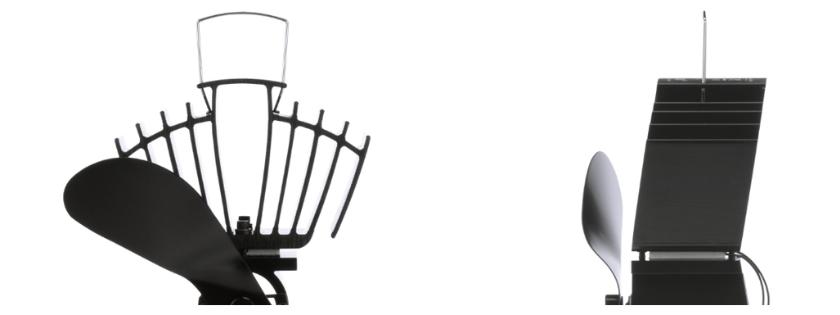
Does Ecofan Really Blow the Air?
Room temperature tests prove Ecofans make a big difference. Keep in mind blades are designed to move air in a donut pattern and you will not feel air pushed straight out like a traditional cooling fan. While you will not feel the air “blowing” like a traditional fan, you will feel a huge difference in the temperature of your room, especially in those corners that tend to become cooler when only utilizing a woodstove without a fan or a blower.
Is Ecofan Really Better than Other Stove Fans?
As the original manufacturer of Ecofans with over twenty-five years of quality craftsmanship and engineering in Canada, we are confident we are producing top of the line wood stove fans to meet your needs. Dependability and performance are what set Ecofans apart from any other stove fans on the market today. Our customers choose Ecofan not only because our fans work the way we claim, but because we are the only award-winning wood stove manufacturer with the evidence to back up those claims. We offer replacement parts and stand behind our warranties.


